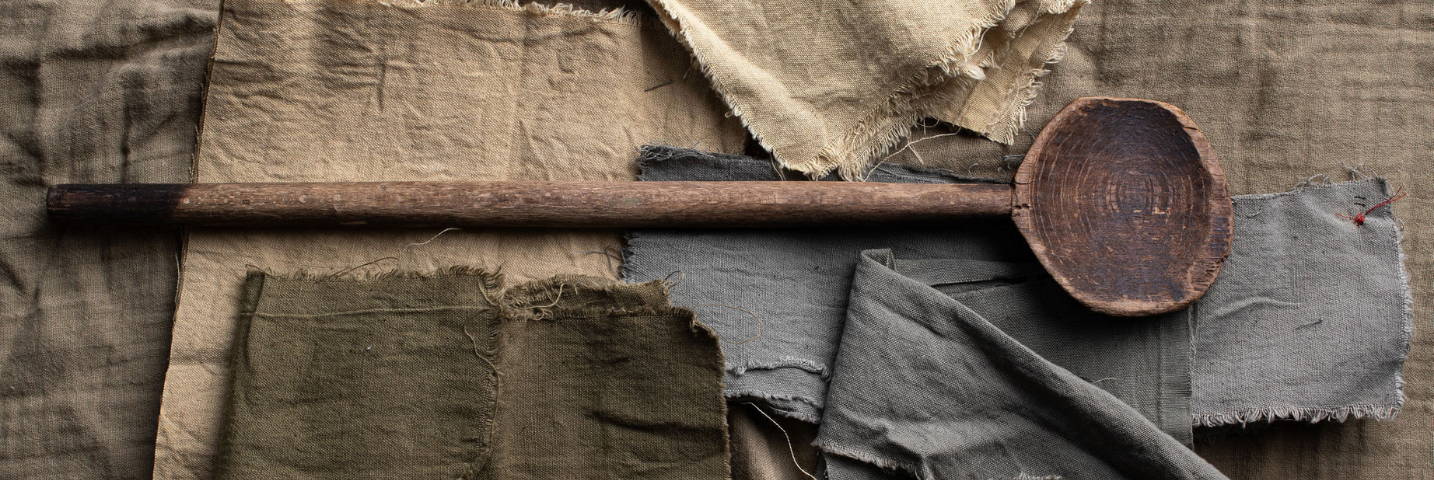
Welcome to the World of Natural Dyes
A return to the old ways of natural colour. A truly sustainable, beautiful practise that will allow us to create a world of colour drawing on traditional wisdom, nature and creativity.
Our belief is that nature is the source that connects us to ourselves, to the land, the seasons, to our food source, to community. The closer we can get to nature, the more in tune with one another and the earth we will be.
Whilst we acknowledge that in time you may tweak and create your own slightly unique methods or recipes, we have worked with traditional dye & textile custodians to share with you their recommendations that will provide you a solid baseline to your practise.
With very little focus and effort, natural dyeing has a very limited impact on the environment. There is of course the heating of vats - gas/electricity/fire, water consumption for vats which can be derived from rain water collection and which can be recycled onto gardens. Used dye stuff and vat water can be reused to create lighter shades until eventually it can be recycled into composts, or direct to gardens for nutrients.
The World of Natural Dyeing is an incredible place to be. Come join us.
Natural Dyes fade. Yes they do. Celebrate it
Yes it does fade.
“Everything is temporary; emotions, thoughts, people and scenery. Do not become attached, just flow with it.”
Buddha
The best way to describe colour fading is its the journey of natural dye, not a blatant fade as with chemical dyes, it goes on a journey of colour breaking down the hues and shades that nature has built within all she provides.
The wonderful thing not many realise is that if mordanted correctly at the beginning you can re dye multiple times over the garments lifetime without having to re mordant.
The one issue with naturally dyed cloth is its relationship to pH levels. pH is a massive component in natural dyeing, it impacts on the colour in many ways, changes colour, strips colour, intensifies colour.
Your Personal Journey
Best advice is to keep an open mind and read and research from multiple sources as you will take a little from each to establish your own dye practice.
Some acronyms and words to be familiar with :
WOF - Weight of fabric
WOD - Weight of dye
Scour - To cleanse fibre of natural oils, waxes and sizing
Mordant - Alum and Alum acetate
Tannin - tannic acid used with cellulose fibres to aid mordanting and dyeing
Vessel/vat/bath/pot - where you dye
Non reactive pot - stainless steel or enamel not chipped
Simmer - 60-70 degrees no more!
Submerge/dunk - keep fibre UNDER the water level
Cream of Tartar - Potassium bitartrate. Mostly used to soften wools and brighten shades of some colours. Not used on cellulose fibres and rarely used with silk 4-6% WOF.
Ferrous Sulphate - Iron. An interesting mordant with several applications. First is to sadden colours as a post mordant. Used with tannins to create a variety of greys. If used in initial mordant process vs post yet another dimension of its properties. Any use of iron enhances the light and wash fast properties of your dye. Best used on cellulose at 2-4% WOF, be careful with protein fibres as it can make their handle brittle. Also Iron can be very contaminating in a dye studio. Make sure to clean thoroughly after use, many dyers will have iron only utensils and buckets due to its contaminating nature.
Tread Lightly
When foraging always consider the timing of your actions in harmony with the season. Could you leave it until the seeds have fallen to replenish the crop? How much do you really need? What are the ramifications to birds, insects, other plant life if you take something? Learn to identify what you discover so your knowledge is comprehensive and you understand the plants requirements for survival and regeneration.
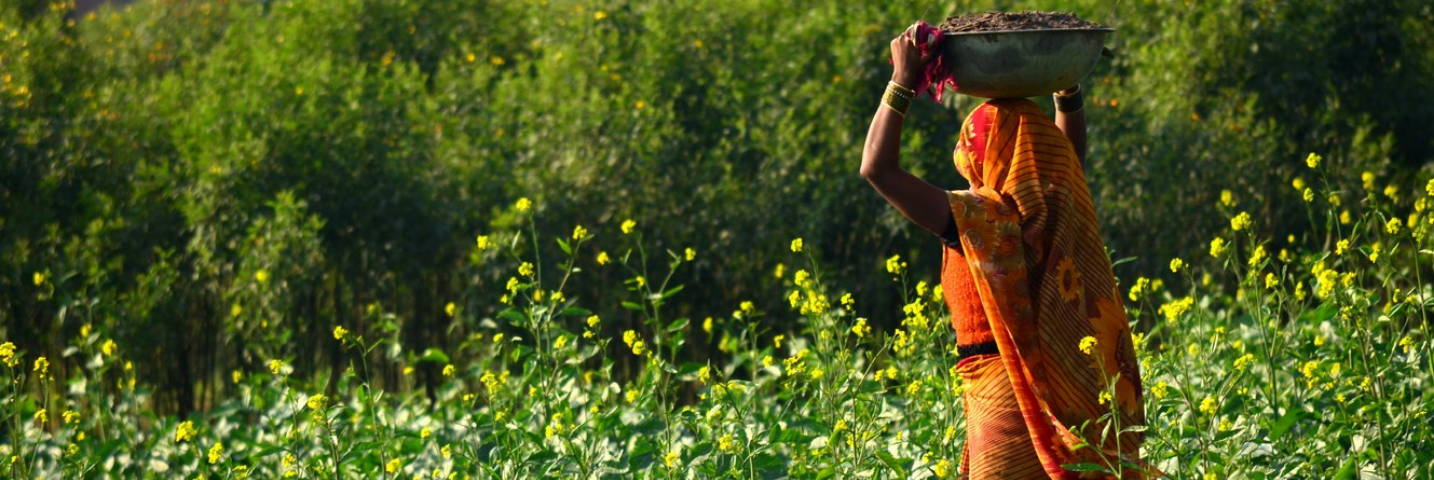
Low Impact to the Environment
Heating of vats - gas/electricity/fire. Water consumption for vats but that can be recycled onto gardens or water consumption for garden maintenance - rain water collection can support this as well as vat water. Vats can be reused many times over either by exhausting the dye pigment or even topping up the dye pigment content. To be realistic all these uses create very limited impact and can be reduced to zero with focus and effort.
BEFORE YOU COMMENCE :
FIBRES
The Natural Dye process differs depending on what type of natural fibre you are working with. So to commence you need to ascertain what type of natural fibre you are working with:
Cellulose - any fibre grown from the earth. Cotton, hemp, linen, ramie, jute, nettle or
Protein - any fibre grown from an animal. Wool, silk, alpaca, angora, cashmere, camel, mohair, yak.
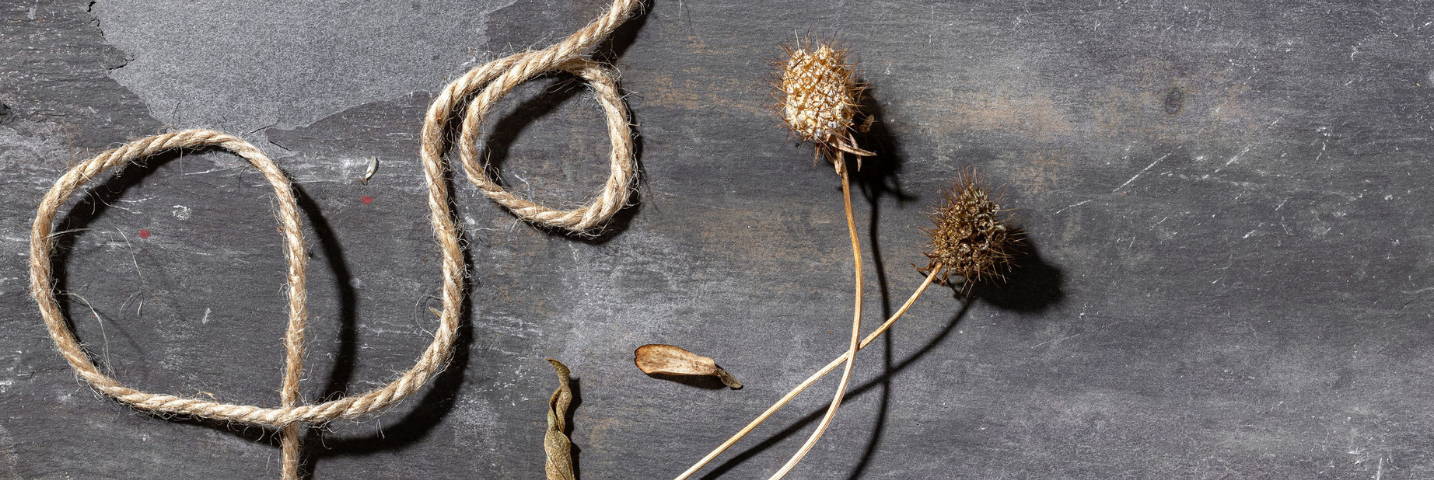
PREPARING YOUR CLOTH/TEXTILE/FABRIC
Step 1 - SCOURING
There are 3 steps to prepare your cloth/textile/fabric for natural dyeing 1)scouring, 2)tannining & 3)mordanting.
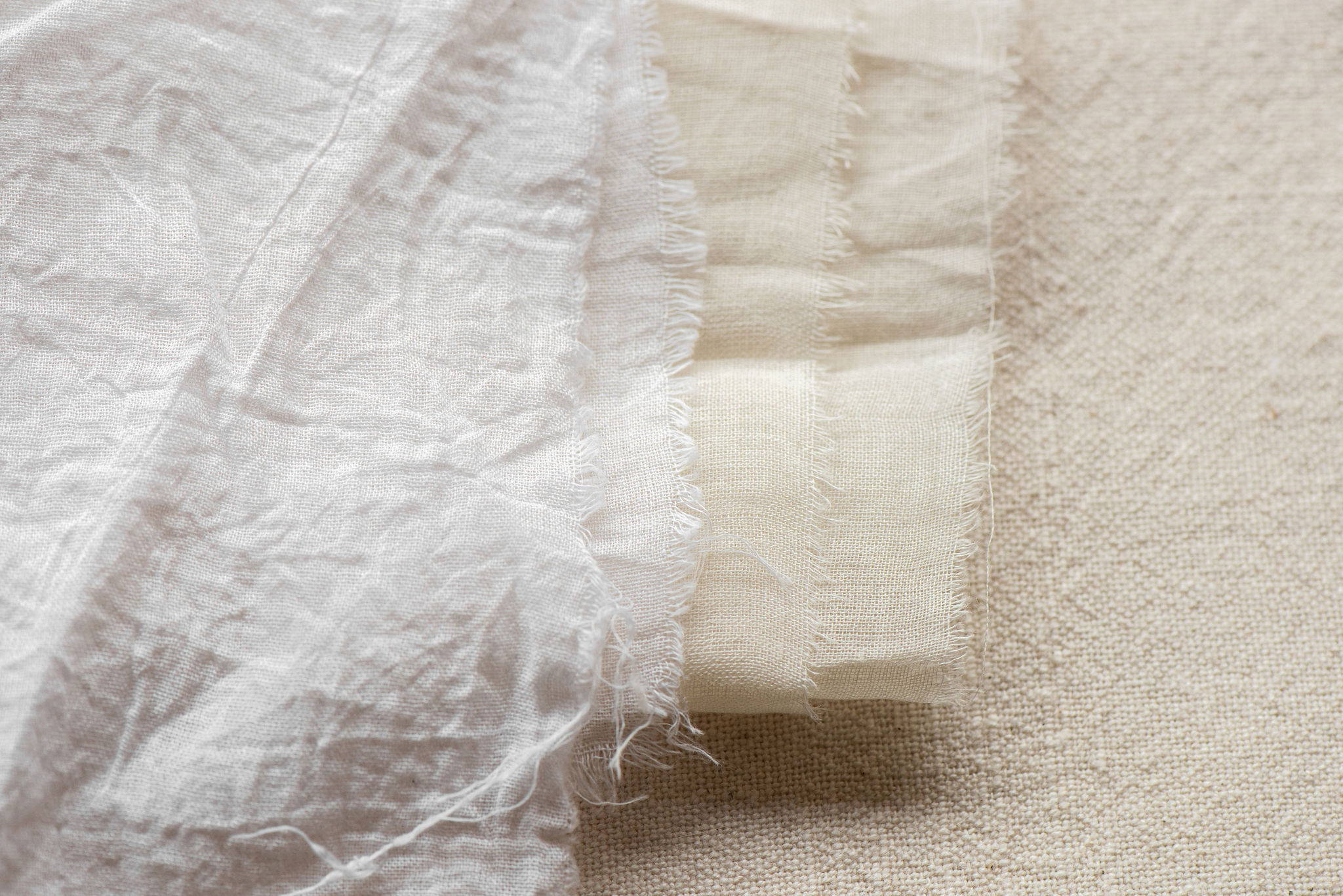
SCOURING CELLULOSE
To begin, we must scour your cloth. This is a really important process and will set you up for success.
Scouring cleanses and prepares the fibre for thorough and even absorption. Scouring will remove oils, waxes, dirt or pectin that have been used in the weaving process.
You will need :
Large stainless steel or enamel pot/vat (remember to keep pots/utensils separate to cooking for dyeing!)
Soda ash/washing soda 5g (or 1 tsp) per 100g of fibre
Mild natural washing detergent (pH neutral) 1/2 tsp per 100g of fibre
Small vessel to mix soda ash/detergent
Small mixing spoon
Large wooden spoon
Thermometer
Rubber Gloves (recommended when hands go into water with minerals such as Alum, Alum acetate, Iron, Calcium carbonate, Soda Ash)
Instructions :
Weigh your fibre to calculate soda ash/washing soda and detergent.
Pre-mix soda ash/washing soda & natural detergent in small vessel with spoon.
Fill large pot (enough water to cover your fibre) and start to heat on heat source.
When hot add pre-dissolved soda ash/natural detergent to mix and stir with large wooden spoon.
Continue to bring to boil stirring every 15-20mins and let simmer 30-60mins.
Allow to cool before removing fibre and rinse in clean water.
If excessively dirty, repeat process.
Note : this process can also be done using 1-2 Soapnuts or a normal machine wash at 50degrees for 20mins.
SCOURING PROTEIN
As per Cellulose except no soda ash, just mild natural detergent 1tsp per 100g of fibre.
Note : Only heat protein fibres to 50-60 degrees. Boiling will damage fibre.


Step 2 - TANNINS for Cellulose fibres
Tannins are needed on cellulose fibres only in preparation for absorption in the mordanting process (step 3).
For lighter shades we recommend preparing your fibre with the either Myrobalan or Gallnut as a tannin and you can use either Powder or Extract versions. For darker shades we recommend using either Cutch or Walnut and again, powder or extracts work.
Recommended is usually 8 - 15% WOF so we go with 10%.
You will need :
Large stainless steel or enamel pot/vat
Tannin 10% WOF
Small mixing spoon
Large wooden spoon
Instructions :
Weigh your fibre to calculate tannin. Then wet your fibre.
Dissolve tannin with hot water in small vessel with spoon.
Fill large pot (enough water to cover your fibre) and bring water to 60-65 degrees.
When hot add tannin to mix and stir with large wooden spoon.
Add fibre constantly submerging it below the water and removing air bubbles.
Leave fibre submerged and continue to rotate below water line for 60mins.
Allow to cool before removing fibre and rinse in clean water.
Proceed to mordanting today or leave to dry.
Note : Tannin bath can be re-used so if you have the pots and the space label this and set aside for next time.
Step 3 - MORDANTING
Mordanting coats the fibre to allow your dye to stick for a longer, gives a richer outcome and improves the longevity & light fast qualities of your dye over it's life.

MORDANTING CELLULOSE
You can use aluminium (alum) or aluminium acetate to mordant. Like tannins this is a personal choice based on your desired colour or simply availability at the time.
Choose from either :
Alum 12% WOF or
Alum acetate 8% WOF
You will need :
Bucket or vessel
Mordant - either Alum 12% WOF (weight of fabric) or Alum acetate 8%
Small mixing spoon
Large wooden spoon
Instructions :
Weigh your fibre to calculate alum or alum acetate. Then wet your fibre.
Fill large pot (enough water to cover your fibre) with warm water from tap 40-50degrees.
Put on mask & gloves. Dissolve alum or alum acetate with hot water in small vessel with spoon. Remove mask.
Add to pot and stir with large wooden spoon.
Add your wet tannined fibre to vessel giving it a stir and leave it submerged below the water removing air bubbles.
Leave sit for 2 hours or as much as overnight, giving it a stir a couple of times during this time.
Remove fibre, squeeze off excess water and hang to dry to leave wet and proceed to dyeing.
Note : Mordant bath can be re-used so if you have the pots and the space label this and set aside for next time.
After mordanting cellulose fibres need either a chalk (calcium carbonate) or wheat bran bath to further fix the dye.
Chalk bath - calcium carbonate
You will need :
Large stainless steel or enamel pot/vat
5g of calcium carbonate per 100g fibre
Small vessel to mix chalk solution
Small mixing spoon
Large wooden spoon
Instructions :
Dissolve chalk with hot water in small vessel with spoon.
Fill large vessel with hot water from tap with enough water to cover your fibre.
Mix dissolved chalk solution to large vessel.
Dunk fibre into large pot and stir. Leave to sit for 20-30mins.
Rinse in clean water and proceed to dyeing or store for another day.
Wheat bran bath
You will need :
Large stainless steel or enamel pot/vat
10g of wheat bran per 100g fibre
Cheesecloth or textile to bundle wheat bran
Large wooden spoon
Instructions :
Put wheat bran inside textile and create bundle to hold or tie up.
Fill large vessel with hot water from tap with enough water to cover your fibre.
Dunk wheat bran bundle into water and let the juices extract until it is milky. You may need to squeeze bundle.
Add fibre to pot and leave sit for 20-30mins.
Rinse in clean water and proceed to dyeing or store for another day.
Note : Chalk & wheat bran baths can be stored and reused, just add a teaspoon of either chalk or wheat to freshen up. Wheat will rot or ferment and tell you when it is done.
MORDANTING PROTEIN
Wool
You will need :
Alum 15% WOF or
Cream of Tartar 5% WOF - optional
Large stainless steel or enamel pot/vat
Small vessel to mix solution
Small mixing spoon
Large wooden spoon
Instructions :
Dissolve alum & cream of tartar (optional extra) in very hot water in small vessel.
Fill large vessel with hot water from tap with enough water to cover your fibre.
Mix dissolved alum/cream of tartar solution to large vessel.
Add wet fibre into pot and stir well. Heat gradually over 35-40mins to 80-90degrees and hold for 1 hour ensuring you gently turn the fibre.
Leave to cool in bath for 20mins.
Rinse in clean water and proceed to dyeing or store for another day.
Silk
You will need :
Alum 15% WOF
As per Cellulose except Silk does not require heating. Simply leave in hot water from tap for 1 hour.
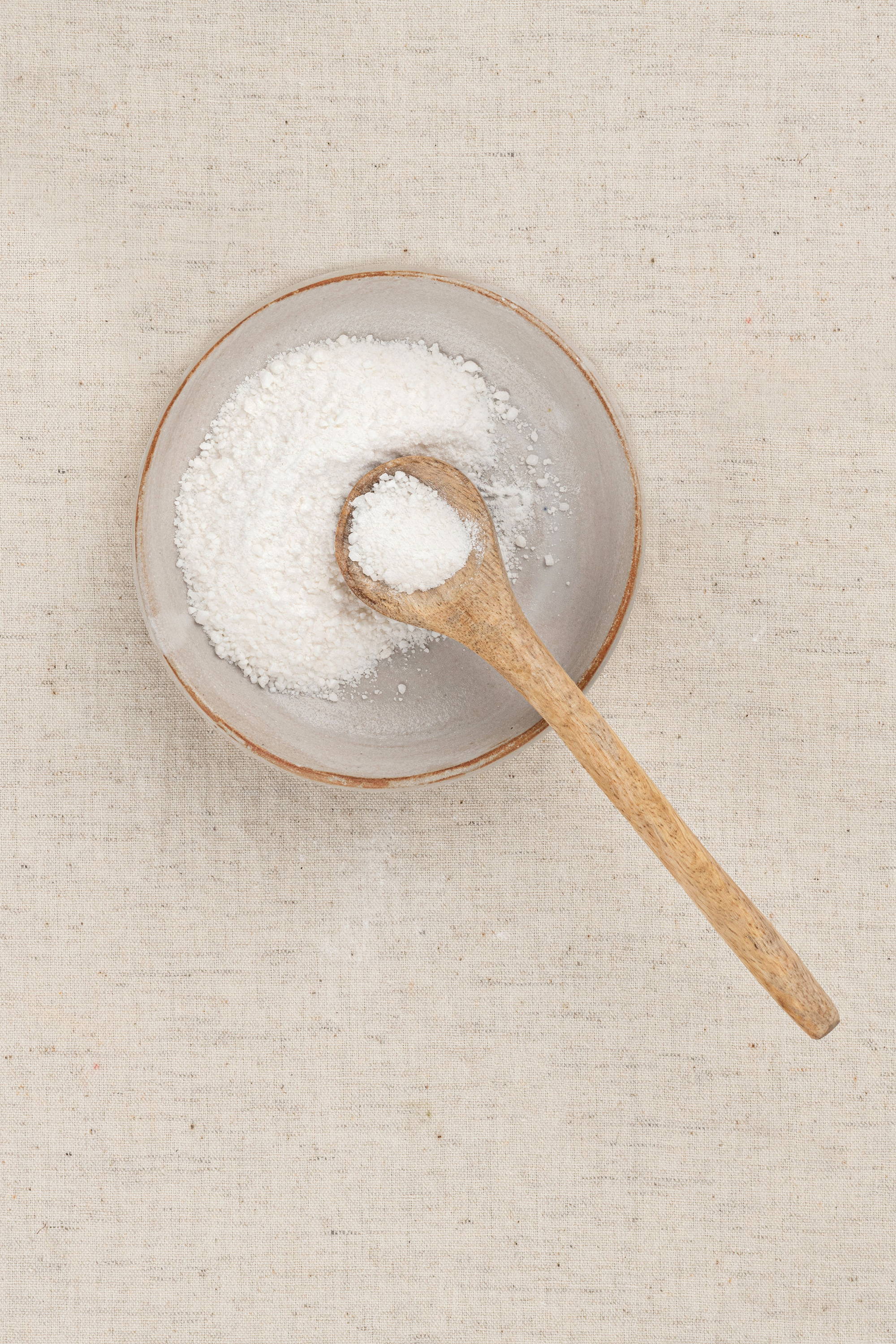
Step 4 - DYEING
Now your fibre is ready to dye!
You will need :
Large stainless steel or enamel pot/vat
Dye extract or powder % WOF - visit our Natural Dye Glossary to confirm recommended % for your use
Large wooden spoon
Instructions :
Dissolve dye in bowl with warm tap water, stir well to ensure dissolved.
Fill large pot with warm water from tap with enough water to cover your fibre.
Add dye to water to dilute stirring well.
Add wet fibre into pot and stir well. Heat gradually over 1 hour to 90degrees and hold for 1 hour ensuring you gently turn the fibre.
Rinse in clean water and dry.
Exceptions :
Madder must be heated slowly over 1 hour to just 40-50degrees and held for 1 hour.
Madder extract should be bagged in cheesecloth or textile and dunked into vessel, heated to 40-50degrees then squeezed out. The remaining dye is your dye bath. Add wetted fibre and heat to 60degrees and hold for 1 hour.
Iron - After dyeing is a final optional step to dramatically alter the colour of your dyed fibre giving you a whole range of colours to explore from one dye.
You will need :
Iron 2% WOF
Small vessel to mix solution
Small mixing spoon
Large wooden spoon
Instructions :
Dissolve iron in very hot water in small vessel.
Fill large vessel with hot water from tap with enough water to cover your fibre.
Mix dissolved iron solution to large vessel.
Add wet fibre into vessel and stir well. Heat to 70-75degrees and hold for 30mins ensuring you gently turn the fibre.
Rinse in clean water well.
Rinse vessel with clean water to ensure no contamination from the iron to future vats.
Note : Once fibres have been mordanted they do not need to be re mordanted between dyes.
Visit our Natural Dye Glossary for additional information on each dye.
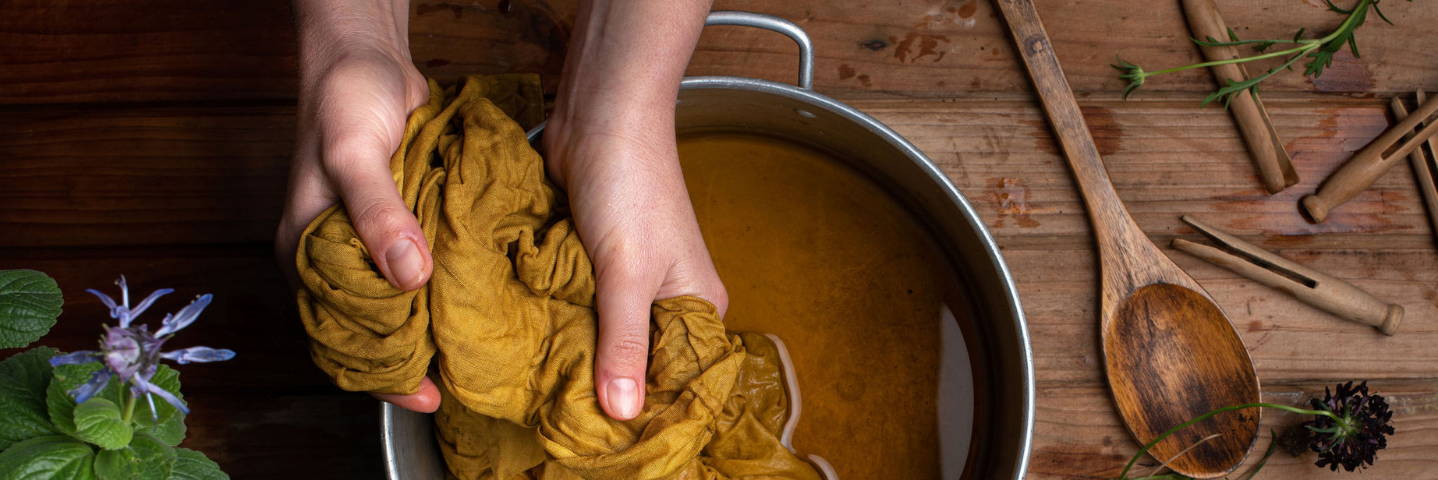
Step 5 - CARE following Dye Process
Rinse your dyed fibre and leave to hang dry.
Please visit our Care guide for advice on ongoing care of your natural dye cloth.
